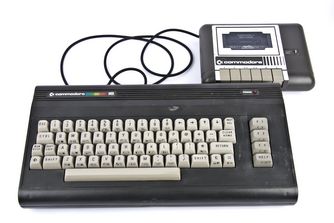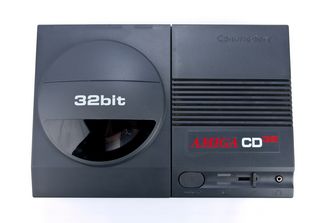
Hosted by the University of Plymouth

Hosted by the University of Plymouth
To all intents and purposes, this machine is the same as the original Commodore 64, but in a new case and with new (but functionally identical) versions of the graphics, sound and I/O chips. The aim was basically to make the system look a little more up-to-date (bringing its appearance into line with the Commodore 128) by departing from the dated 'breadbox' design of the earlier model. In the US, it was often bundled with GEOS (Graphic Environment Operating System), giving a more up-to-date, windows-based feel to the software as well. Although it did not change the underlying specs, the revamp helped to ensure that the Commodore 64 lineage continued to sell into the 1990s.
Commodore, 1986
Donated/on loan from: Prof. Steven Furnell, Plymouth University

The Commodore 16 was released in 1984 and intended as an entry-level home computer to replace the popular but aging VIC-20. Taking its name from its 16K RAM, the C16 used a 6502-compatible 8501 CPU, and was originally sold in the UK as part of a Starter Pack including cassette unit and games for... (read more)Commodore, 1984

The Commodore 64 is one of the most popular home computers ever produced, described by the 2001 Guinness Book of Records as the most "prolific computing device ever manufactured" and selling around 30 million units until it ceased production in 1993. Taking its name from its 64K of RAM, the mach... (read more)Commodore, 1982
One of the final models in the Amiga line, which had begin with the Amiga 1000 in 1985. An incredibly innovative and powerful computer in its day, the Amiga was notable for offering 4,096 colour graphics and synthesizer sound, leading to significant popularity as a games machine. Other capabili... (read more)Commodore, 1992

The CD32 was essentially the popular Amiga computer system recast as a games console. The Amiga had always been popular amongst gamers, and the CD32 aimed to extend this further by following the emerging trend for CD-based storage (which had already been available on systems such as Sega's Mega ... (read more)Commodore, 1993

Taking its name from the MOS Technology Video Interface Chip that provided its graphics (176x184 pixels in 16 colours), the VIC-20 was Commodore Business Machines' first foray into the home computer market, following the success of its PET range of business systems. The VIC-20 came equipped with... (read more)Commodore, 1980

An Introduction to BASIC - Part 1 for the VIC-20 Colour Computer by Andrew Colin. 152 pages. (read more)Commodore, 1981